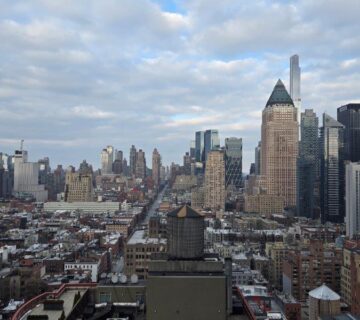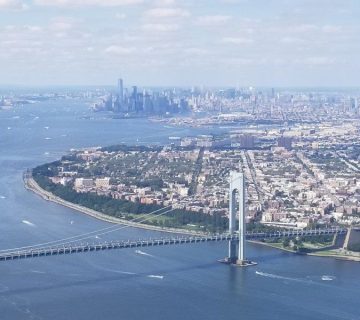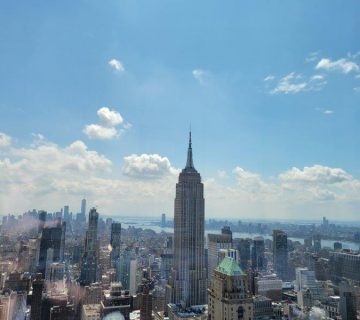New York City is the city that never sleeps, and traffic congestion a common issue with over 8 million people living and working in the city. New York rush hour can add significant commuting time for commuters and travelers alike, and knowing what time is rush hour in NYC can help you plan your travels and avoid the worst of the traffic.
In New York City, rush hour traffic on weekdays is at its worst from 7:00-10:00am and from 4:00-7:00pm.
If you are a commuter driving in to Manhattan, bridges and tunnels tend to get very busy during rush hour, so it is advisable to plan accordingly. As well, the number of lanes available for cars to drive on in Manhattan has been reduced with dedicated bus lanes, bike lanes and pedestrian paths being added or expanded, so it is easy for traffic to get backed up in instances like a cab picking or dropping a passenger off to their destination.
Public transportation is a great alternative to driving, and is very extensively used in New York to manage commute times.
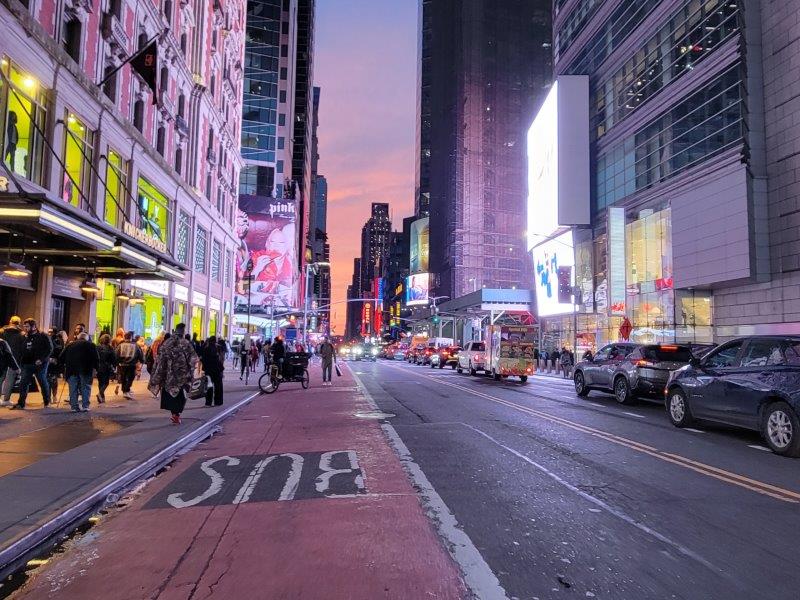
New Yorkers are big walkers, so walking is a great way to get around. Biking is also a great alternative, though it is important to bike in designated lanes for safety reasons as you will be sharing the road with cars and buses.
Table of Contents
New York Rush Hours Times
Rush hour refers to the times when commuters are traveling to and from work, and can vary depending on the mode of transportation. Rush hour can also vary depending on the mode of transportation and the location. For example, rush hour for trains may differ from rush hour for buses or cars.
New York City is known for its busy streets and crowded subways, which are exponentially busier during rush hour.
Morning Rush Hour
New York City morning rush hour typically starts around 7:00am and lasts until 10:00am. During this time, commuters are heading to work, school, or appointments, and include people commuting in and around the city from the tri state area and even further. The streets and subways can get very crowded, though it is less so after the pandemic with work from home being an option for a lot of people.
Bridges and tunnels can get especially crowded for commuters driving in to Manhattan, and the streets within Manhattan can get backed up with traffic as well. According to the Tom Tom Traffic Index, a 10 km trip took 28 minutes during morning rush hour, which added 12 minutes to the commute time.
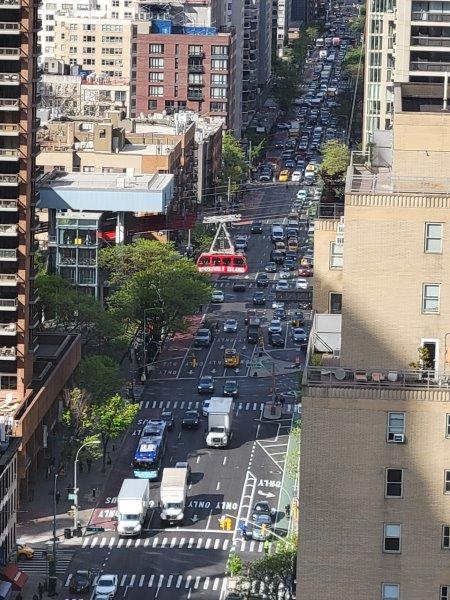
Evening Rush Hour
The evening rush hour in NYC starts around 4:00pm and lasts until 7:00pm. This is when commuters are heading home from work or school, and streets and subways can be just as crowded as during the morning rush hour, if not more so. It’s important to plan ahead and allow extra time for travel during this time.

According to the Tom Tom Traffic Index, a 10 km trip took 33 minutes during evening rush hour, which added 17 minutes to the commute time.
Weekend or Other Rush Hour
While rush hour is typically associated with weekdays, there are also times on the weekends or in the middle of weekdays when traffic can be heavy depending on events happening in the city. Some examples that contribute to the other rush hours in Manhattan are –
- Major sporting event or concert.
- On the last evening of a long weekend when people are returning to the City.
- If there is a major event at the UN, such as the UN General Assembly, where traffic is blocked off completely, or traffic has to make way for world leaders and dignitaries that are visiting at the same time.
- For street fairs in the summer. Long stretches of avenues are blocked off to make way for street fairs on avenues, and this causes a ripple effect for a wide radius around the area.
- Christmas Tree lighting at the Rockefeller Center, and through the end of the year. The area around Rockefeller Center is jampacked with visitors taking the the Christmas lights, and streets get blocked off for this.
- Major outdoor events such as the Macy’s Thanksgiving Parade and the New York City Marathon.
- Parades to commemorate various countries, peoples, and occassions.
At these time, public transportation is by far the most efficient way to get around NYC.
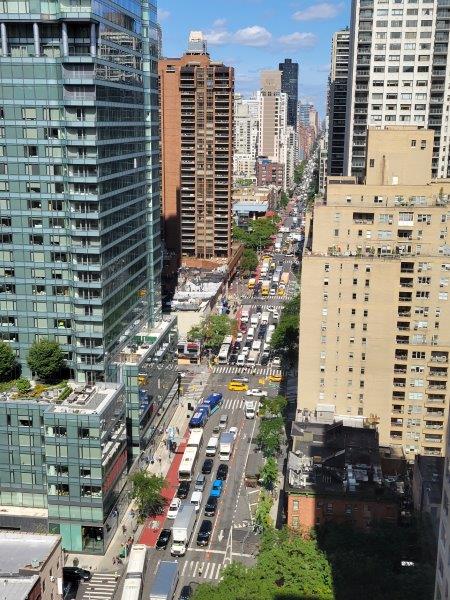
During weekends, the frequency at which trains and buses run is reduced, so wait times between trains can be significantly higher. Subways can be rerouted if there is any scheduled track maintenance, so it is always advisable to check before you travel.
Impact of New York City Rush Hour
Traffic Congestion
Traffic congestion is a reality in New York City, and rush hour exacerbates the problem. During rush hour, the streets are filled with cars, buses, and taxis, leading to slow-moving traffic, long delays, and frustrated commuters. It is common to have people plan their travel to avoid rush hour, I have people in my office that would rather come in to work a couple of hours early rather than wait a couple of hours in traffic.
Midtown Manhattan is known to be very busy during rush hour, especially with all the bridges and tunnels that connect in this area. Avoid driving during rush hour if possible, and consider alternative routes or modes of transportation such as public transportation.

Traffic can also get very congested when it rains or slows, when ride share services tend to hike up their rates and yellow cabs become difficult to find, making public transportation a very viable alternative in all these cases.
Public Transportation
Public transportation is the lifeline of New York City, and the subway and bus systems are packed with commuters, and delays and disruptions can be experienced during rush hour. With so many commuters trying to get to work or school at the same time, you should be prepared for crowded trains, and sometimes having to wait to even be able to board a train. This is less so after the pandemic with many people working from home, but you can expect to stand in crowded buses and trains during rush hour.
According to the Metropolitan Transportation Authority (MTA), the peak travel times for subways are from 7:00-9:00am and 5:00-7:00pm on weekdays. During these times, trains can be overcrowded, and delays are common. The MTA also notes that rush hour for buses can vary depending on the route and location. Also, keep in mind that buses can be slower than subways to get around despite having dedicated lanes.

It is advisable to check the MTA website or app for real-time updates on subway and bus delays or service changes, especially over nights and weekends. Make use of the subway map – I personally use Google Maps all the time – to plan your route in advance, and if possible choose to take an express train or bus to avoid stops and save time.
It is also recommended to use public transportation over driving as the most time, cost and environmentally efficient way to get around.
Conclusion
Rush Hour in New York City, especially Manhattan, can extend your travel time significantly. Rush hour is usually from 7am to 10am in the mornings and 4pm to 7pm in the evenings on weekdays. It is advisable to plan ahead so you don’t end up wasting a lot of time just stuck in traffic, especially if you are driving. Public transportation is a great alternative during rush hour, though you should be prepared for crowded buses and trains, which may require you to stand through the entire trip.


